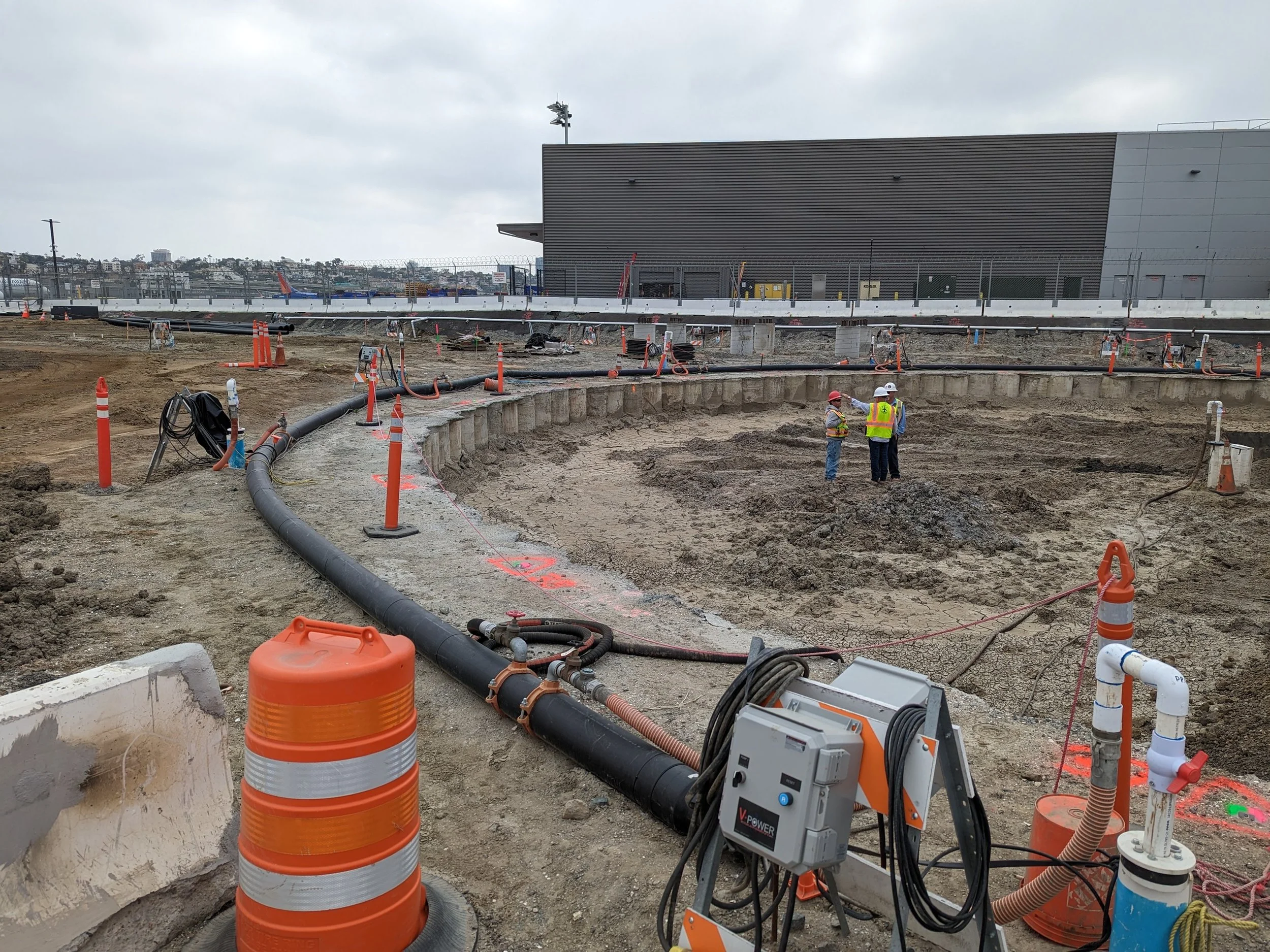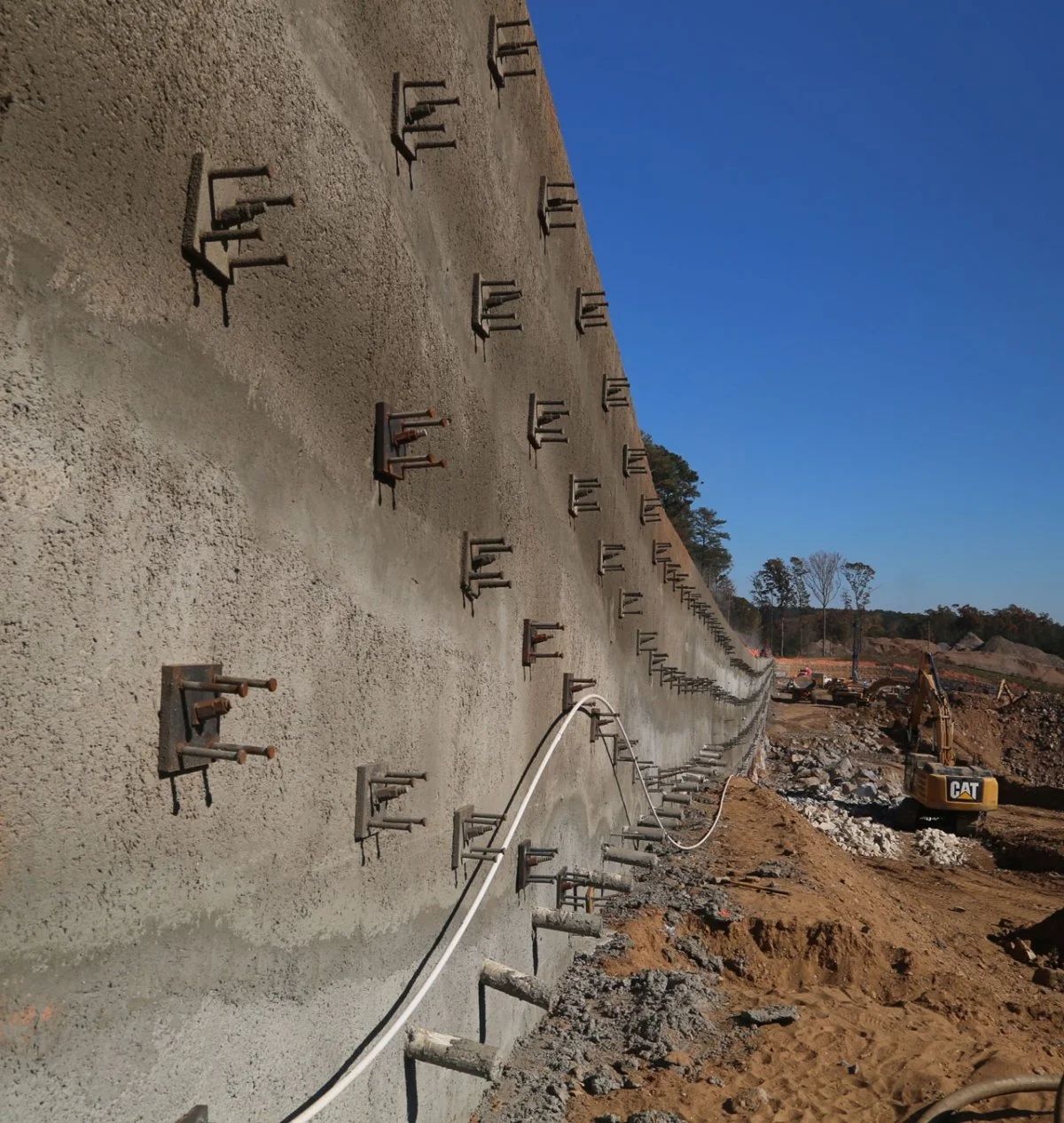SHORING SOLUTION
-

Soldier Beam and Lagging
The soldier beam and lagging system is a widely used method for temporary earth retention during excavation. It involves installing vertical steel beams, known as soldier piles, at regular intervals along the excavation perimeter.
-

Sheet Pile
Sheet pile is a type of interlocking retaining wall element, typically made of steel, but also available in timber, vinyl, or concrete. These individual sections are driven or vibrated into the ground to form a continuous barrier that can retain soil or water.
-

Secant Pile
Secant pile walls are constructed by drilling and concreting a series of overlapping vertical piles. Typically, alternating "primary" piles are installed first, followed by "secondary" piles drilled in between and overlapping the primaries.
-

Soil Nail Wall
Soil nail shoring is a ground reinforcement technique where steel bars, known as soil nails, are drilled and grouted into an existing slope or excavation face at an angle.
TUNNELING SOLUTIONS
-

Tunnel Engineering
We deliver state-of-the-art tunnel design. Our comprehensive suite of services spans advanced soil and rock tunneling solutions and bespoke underground construction. We provide seamless support from initial feasibility and intricate detailed design, through rigorous project and program management, to dedicated on-site technical assistance, ensuring groundbreaking results for every subterranean endeavor.
-

Numerical Modeling
We offer a comprehensive spectrum of geotechnical solutions, encompassing every critical stage of your project. Our services include in-depth site investigation, characterization, and advanced ground modeling, alongside cutting-edge geo-digital solutions, such as sub-surface Building Information Modeling (BIM)
We also offer proactive geotechnical asset management, as well as niche services like mine pit slope design, mine subsidence analysis, and underground void filling.
-

Trenchless Engineering
We lead the industry in utilities design, specializing in advanced trenchless engineering solutions. Our extensive experience spans both soft ground and hard rock trenchless applications. We also provide expert guidance on pipe materials and jointing, as well as the evaluation and optimization of trenchless alignments, ensuring the selection of the most effective technology and methodology. Our services encompass the full lifecycle of trenchless projects, from strategic planning and preliminary engineering to detailed design
-

Sustainability
At Safequake, we've fully embraced a decarbonization and net-zero mindset, actively supporting the collective drive for a sustainable environment. This commitment allows us to provide an early estimation of embodied carbon during the optioneering stage, ensuring that carbon impact is a fundamental part of the decision-making process from the outset. This, along with other advanced digital applications we've developed, empowers us to deliver truly sustainable solutions for both our clients and the environment.
GEOTECHNICAL SOLUTIONS
-

Seismic Site Response Analysis
Site Response Analysis is a crucial step in geotechnical earthquake engineering that evaluates how soil layers modify the characteristics of seismic waves as they travel from the bedrock to the ground surface.
-

Ground Improvement
Ground improvement encompasses a variety of techniques used to enhance the engineering properties of soil, making it more suitable for construction. These methods can increase soil strength, reduce compressibility, decrease permeability, and mitigate liquefaction potential.
-

Deep Foundations
Deep foundations are structural elements that transfer building loads to deeper, more competent soil or rock strata when shallow foundations are inadequate. These foundations extend significantly below the ground surface and include systems like piles, piers, and caissons.
-

Slope Stabilty
Slope stability analysis assesses the resistance of natural or engineered slopes to failure caused by gravity, water pressure, or other external factors. It involves evaluating the shear strength of the soil or rock mass and comparing it to the stresses acting along potential failure surfaces.scription goes here
